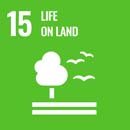Project Information
Killala Native Forest Protection Project
Avoided Deforestation
Farming is a hard business that throws countless obstacles at those who work to feed, clothe and sustain the rest of us. With often harsh weather including sustained drought that then turns into rampant rain, predicting productivity and income levels is a daily challenge.
But for Ken Dunne at Killala, the decision to protect over 1,800ha of native forest for 100 years not only delivers carbon abatement and sequestration, it has ensured the survival of his sheep and grazing business through the harsh years of drought suffered by Western NSW.
Throughout the historic drought, regular carbon income paid for the pasture Ken trucked in to feed his sheep. It also paid for three new ground tanks to be dug which created a consistent water supply for the livestock. Miles and miles of fencing was been repaired and replaced with the carbon money, ensuring safety of the sheep and allowing Ken to manage locations of both sheep and goats across the property.
The extra income has also enabled Ken to employ one of his daughters full-time to work on the property. Something that he finds particularly helpful when chasing 1,200 ewes with lambs afoot through the vast expanse of semi-arid red land where they like to play hide and seek in the mallee.
“If it weren’t for the carbon money, my daughter would have had to work in the mines. Instead she can be here on the land, with me and my wife to maintain our family business,” says Ken.
Key Benefits
UN Sustainable
Development Goals


Statistics
Methodology
Carbon Credits (Carbon Farming Initiative – Avoided Deforestation 1.1) Methodology Determination 2015
Registered ID
Date registered
October 2014
Project area
1,827 ha
Permanence
100 yrs
Location
Cobar, NSW






